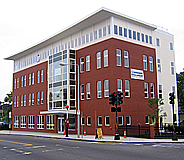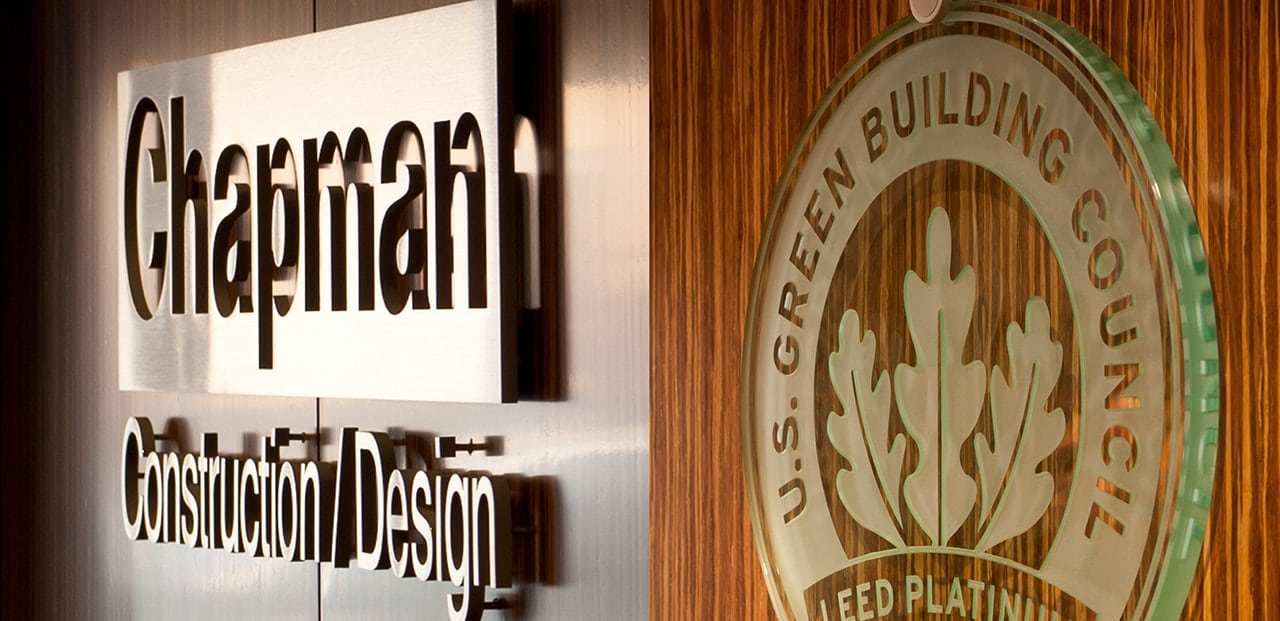Two years ago, 550 Dudley Street was just an overgrown vacant  lot in a precarious Roxbury neighborhood. Today the site houses Project Hope’s newly-constructed Community Building, which will offer education and workforce development services for families moving out of poverty. In addition to providing these vital resources, Chapman also hopes the structure will become the first LEED-certified “green” building in Roxbury.
lot in a precarious Roxbury neighborhood. Today the site houses Project Hope’s newly-constructed Community Building, which will offer education and workforce development services for families moving out of poverty. In addition to providing these vital resources, Chapman also hopes the structure will become the first LEED-certified “green” building in Roxbury.
With the assistance of Boston’s Green Roundtable (GRT), Chapman is now in the process of completing the project’s LEED certification submission for the United States Green Building Council (USGBC). Although the original project goal was to achieve “basic” LEED certification, the Chapman team now is attempting to earn enough points to achieve the higher “Silver” level of LEED certification.
The new Community Building has been a collaborative effort by Project Hope, architects Finegold Alexander + Associates, Chapman, and Chapman’s subcontractors. During preconstruction, the team registered the project with the USGBC and was provided with a green building credit rating checklist outlining the LEED-certification process. A project must obtain 26 to 32 points for basic LEED certification, 33 to 38 points for Silver, 39 to 51 points for Gold, and 52 to 69 points for Platinum certification. The Green Roundtable, Chapman’s green consultants for the certification process, also provided Chapman with some useful tools, including a spreadsheet that simplifies calculations such as the percentage of recycled debris by category (metal, cardboard, wood, etc.)
Suzanne Robinson, consultant at the GRT who oversaw Chapman’s work at Project Hope, explains that LEED certification is a process that begins from the building’s conception. As such, she suggests that even before the first piece of equipment hits the site, more than half of the credits required for basic LEED certification should have been met, or should be readily achievable. These credits are granted for choice of location (within an urban environment, having access to public transportation), environmentally-sensitive systems (efficient water management in landscaping and at the facility; advanced ventilation systems), and lighting and climate management (natural lighting used in the majority of indoor spaces).
When asked about whether the perceived cost premium of building green is reality or just a misconception, Robinson answers, “Yes and no. Possibly, but not necessarily.” She points out that environmentally-focused materials’ costs are dropping, and in many cases don’t carry as high a price tag as comparable non-green materials, a fact that Project Manager Adam Guild learned first-hand when it came to selecting the drywall for Project Hope. With some research assistance from co-op Dan Larkin, they discovered a recycled drywall product from Canada which carried no extra cost, and required just a bit more coordination from the drywall subcontractor to order it up in time. With this knowledge, Guild points out there really are few reasons not to use the green drywall product on the majority of Chapman’s projects.
Jobsite recycling was also a critical part of the green approach to Project Hope, with Chapman aiming to recycle 75% of discarded materials. Chapman’s selected waste management company, Jet-A-Way, set up Project Hope with designated dumpsters of varying sizes for the different types of reclaimed materials. Chapman’s site staff was responsible for policing the dumpsters and for motivating the subs to participate (which is no small feat, knowing that the subs are usually less concerned about where and how they dispose of refuse). Bob Katilus, Sales Director at Jet-A-Way, appreciated the Chapman team’s enthusiasm for the project. “The Chapman guys—George, Adam, and Bill—brought a lot of intensity to the kick-off.” He adds, “It was a good fit and Chapman wanted to see it happen. It was about strong relationships [with the subs] and being committed to the goal.”
After the finishing touches have been made to Project Hope in the next week or so, the building will undergo a required two-week commissioning process during which the systems will be run continuously to ‘flush out’ any environmentally hazardous matter and to allow the systems to stabilize. Once that process is completed, Chapman will work with the GRT to wrap up the documentation and submission process.
The USGBC will complete a review within nine months of the submission and give its preliminary findings. Once we receive these initial findings, we have an opportunity to contest any points for which we felt we met the criteria, after which the USGBC will conduct another selective review. When all is said and done, we should know within 12 months what level of LEED certification we have achieved.
As symbolically significant as that certification will be, the project’s importance to Chapman’s green building efforts reaches far beyond the number of points it eventually earns from the USGBC. It has been a tremendous learning experience for all involved including Project Managers Adam Guild and George Dyroff; Construction Supervisors Bill Shomphe, John Bidgood, and Mike Bittelari; Field Staffer Jardson Nascimento; and Wentworth co-op student-employees Roberson Castor, Craig Cunniff, Dan Larkin, and Scott Miller. So while Project Hope will be Chapman’s first LEED-certified project, it certainly won’t be the last.
published 07.21.2006


